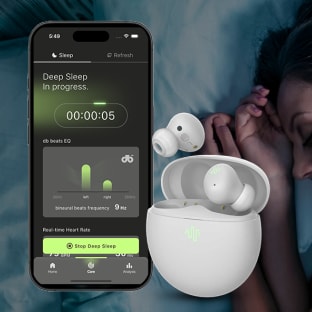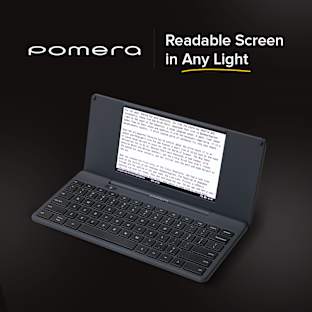After getting fed up with $800 electricity bills, I realized that I had no real way to tell when the filters on my A/C needed changing. This has lead us here with FilterWatch, a simple device that measures how clogged your air filter is and alerts you when its time to be changed. FilterWatch monitors the airflow going into your filter. Slow airflow means less filtering and longer run times! When the airflow gets to be too slow, an alarm on the FilterWatch will go off. Simple and effective, and the benefits are huge!
If your filter is clogged 20%, your HVAC runs 20% longer. So if your HVAC was running 5 hours a day with a new filter, its now running 6 hours a day. A typical HVAC unit will use 3kW in an hour. So figure that extra 1 hour will cost you $.30 if your service provider charges you $.1/kWh. That doesn't sound like a lot but...
Just attach FilterWatch to a vent in your house (return vent is best), press the start button and wait for FilterWatch to alert you when your filter needs changing.
I'm going to save a boat load of money and we expect a lot of you will as well whether its cooling in the summer or heating in the winter.
This makes our HVAC system(s) an integral part of our LIVES!
For most of us, our HVAC system is the primary method for filtering the air that we breathe AND it is the #1 source of energy usage in our homes. With something so important in our lives, it makes sense that we should pay extra attention to make sure that it is working as efficiently as possible.
Thanks for your support!
The Air that You Breathe
Indoor dust, mites, pollen, and dander are major triggers of asthma and other respiratory aliments. One of the best methods of limiting these allergens in your home, is to trap them in your HVAC filter. As your air filters get clogged with these allergens, they become less and less effective. Lower air flow through the filter and poor seating due to flexing of the filter are just a couple reasons they become less effective at trapping particles.
Check out these asthma prevention methods on WebMD, making sure your filter is clean is right up there near the top and is certainly one of the least costly items to implement.
asthma prevention methods
Are your HEPA filters protecting your family? They might be for a while, but they get clogged as well and their effectiveness is quickly reduced as the airflow is reduced by clogging. Many people install HEPA filters in systems that are marginally designed and the added filtering reduces the air speed to a point that many allergens are too heavy to be picked up by the filter system. The energy costs sky-rocket because the system runs longer. FilterWatch can help you decide what filter might be best for your system.
![]()
Check out what that looks like in my house when I neglect the filter:
![Dust escapes past filter]() Dust escapes past filter
Dust escapes past filter
FilterWatch will tell you to change your filter when it is ready to be changed based on how dirty it is.
The condition of your filter directly affects its ability to clean the air in your home AND when your HVAC filter is clean, it is one of your best defenses against airborne contaminants. Check out the information at the following link. It summarizes several studies related to the effectiveness of different filters, whole home filtration, and room filtration all related to controlling indoor allergens. If you or your family are affected by respiratory ailments such as asthma please read:
THIS SUMMARY OF SEVERAL STUDIES!
The Energy that You Consume
The Department of Energy states that maintaining a clean air filter will reduce your HVAC energy consumption by as much as 5-15%.
http://energy.gov/energysaver/articles/maintaining-your-air-conditioner
Why is it that many people forget to change the air filters in their house if they are able to save that kind of money by doing so? It can be a nasty chore. Bump it on the way out and all the dust collected is on the floor or your head.
It's all about getting as much of the hot or cold air as your system can generate into the house as fast as possible so the system can turn off. A clean filter with proper duct sealing and insulation in your home will get you the maximum benefit from your HVAC system.
When is the RIGHT TIME to change your air filters?
Some people like to change their air filters every 30 days and why wouldn't you when the label on the air filter says "30 day filter"?
Some people like to look through the return vent to see if the filter is dirty or 'bending'.
What if your air filter is already 25% clogged after 30 days or when you look at it? Worse yet, what if you forget to check your filter for a couple extra weeks?
If your air filter should be changed at 30 days because it is already 25% clogged and you wait until 60 days, You are likely wasting a minimum of $25 on your energy bill for that extra 30 days! (See chart below)
This link will take you to the study by Old Dominion University that shows the added cost of electricity each month given a 23% clogged air filter. It's over $13 per month with just 5 hrs of running per day at $.1 per kWh! A 20% increase over the cost of running with a clean air filter. A summer here in AZ and your system is probably running 12-16 hours a day! You can see that during our peak, its imperative to keep a clean filter.
Old Dominion Study
Check the average price per kWh for your state here.
Check out a related chart with ESTIMATED EXTRA ENERGY COSTS based on the clogged % of an HVAC air filter. These numbers match up pretty close to the Old Dominion study as well as the Department of Energy's 5-15%.
![]()
Still not convinced? Just read the first few lines of this study funded by the Department of Energy back in 2003. "The most common problems affecting residential and light commercial heating, ventilation, and air-conditioning (HVAC) systems are slow refrigerant leaks and dirty air filters".
DOE Funded Study
How does FilterWatch operate?
FilterWatch comes with a small mounting bracket that gets attached to the rim of the return vent (near the filter) or a room vent. A start button is used to tell the monitor that a new filter has been installed. Snap FilterWatch to the mounting bracket and from this point on there is nothing to do. An LED and a BEEPER will tell you when the filter needs to be changed. Check out what it looks like installed (this is a model that we are targeting):
![]()
When FilterWatch measures an air flow change around 25% lower than the initial reading, the alarm will go off about once every minute until the user resets the alarm or changes the air filter. (The clog % is user settable)
How far along are we?
We've built several prototype FilterWatch monitors to work out issues with different readings based on part variance and manufacturing variance.
![Checking monitors against another anemometer.]() Checking monitors against another anemometer.
Checking monitors against another anemometer.
You can follow along our progress and understand some key decisions we have to make along the way. Just go to our blog HERE.
The REWARDS
FilterWatch BASIC
This is the simplest and lowest cost option. Attach it to a return vent, start it, wait for led/beeper to alert you that your filter is clogged. For a low battery, the alert will be different. The BASIC model has a connector that will support a relay output, a serial bus, and other signals as needed. ---UPDATE--- we have added an LCD to all models that will allow for added functionality.
FilterWatch WirelessZ
This is our initial wireless version. We will support the latest ZigBee home automation systems. We support SmartThings, WigWag, and Almond+.
Select this model if you want.....
- a filter shipped to your door when yours is clogged.
- a notification sent to your phone
- to record data over a period of time
The PLAN
These plans are subject to change but they are targets as of Oct 1, 2012. See updates on our blog.
With the funds we hope to gather here we will have the package professionally designed and put into molds. The current prototype PCB will be made much smaller but our focus is on manufacturing simplicity and reliability versus having the smallest lowest cost device we can build.
Flexible funding a physical device can be tricky as much of our costs are related to volume purchasing of the hardware and volume manufacturing. Mike and I are prepared to partially manufacture the PCBs by hand but most likely will only be doing the final assembly and test of the first 500-1000 devices. The "fund priority" below is an example of how the funds will be dispersed depending the amount available. You can see below that priority 1 line items are those things that we MUST have done because we lack the internal resources.
Fund priority:
1. Package design
1. Package molds
1. Manufacture PCB/ Buy Electronic parts
1-2. PCB Assembly
*. PCB Layout - internally
*. Firmware - internally
*. Final Assembly and test - internally
Manufacturing and Scale-ability
Our local PCBA partners are fully capable of scaling to thousands of assembled PCBs per week and we will design the PCB to be 95% assembled using automation (LCD and Battery compartments must be hand soldered).
After the LCD and battery compartment are soldered on, we estimate it will take 1 minute to install the PCB into the housing.
We have a 2-piece housing and the intent is to use screws to attach the halves together. This eliminates difficult issues with snap together plastic that is often the reason for initial products missing delivery deadlines.
To facilitate complete, but fast testing, we have designed B.I.T. (built in tests) into the firmware that can be initiated through an external connector. (A benefit of avionics experience) This allows us to test buttons, leds, LCD, radio and air-speed sensor operation in less than 2 minutes per monitor. This testing includes calibration of the sensor that gets stored in non-volatile memory.
We are also dumping the B.I.T. results out to a database so we can further determine the need for individual calibration for future ultra high precision operation.
Schedule
The schedule below is based meeting our fund raise in the desired window. Please be aware that under the Philips page, if we are selected as a top project, our fund raise may be re-opened even if it did not reach our ultimate goal. --UPDATE- Campaigns do not re-open, so we are targeting the time frames stated below.
Nov: First molded parts and first assembled PCBs for validation
Dec: First fully assembled PCB, and plastic parts start arriving for final assembly and test.
Jan: Final Assembly and Test complete
Jan/Feb 2014: Product start shipping
FilterWatch Wireless
Jan: Wireless Testing and FCC certification - TBD
Feb 2014: Manufacturing and test
Mar 2014: Product start shipping
The TEAM
Mike Mayer (Partner) - SIma Engineering
John Pollock (Partner) - Innovation Play
Dr. Brent Stephens (Advisor), Illinios Institute of Technology - BIO



































 Dust escapes past filter
Dust escapes past filter

 Checking monitors against another anemometer.
Checking monitors against another anemometer.

















